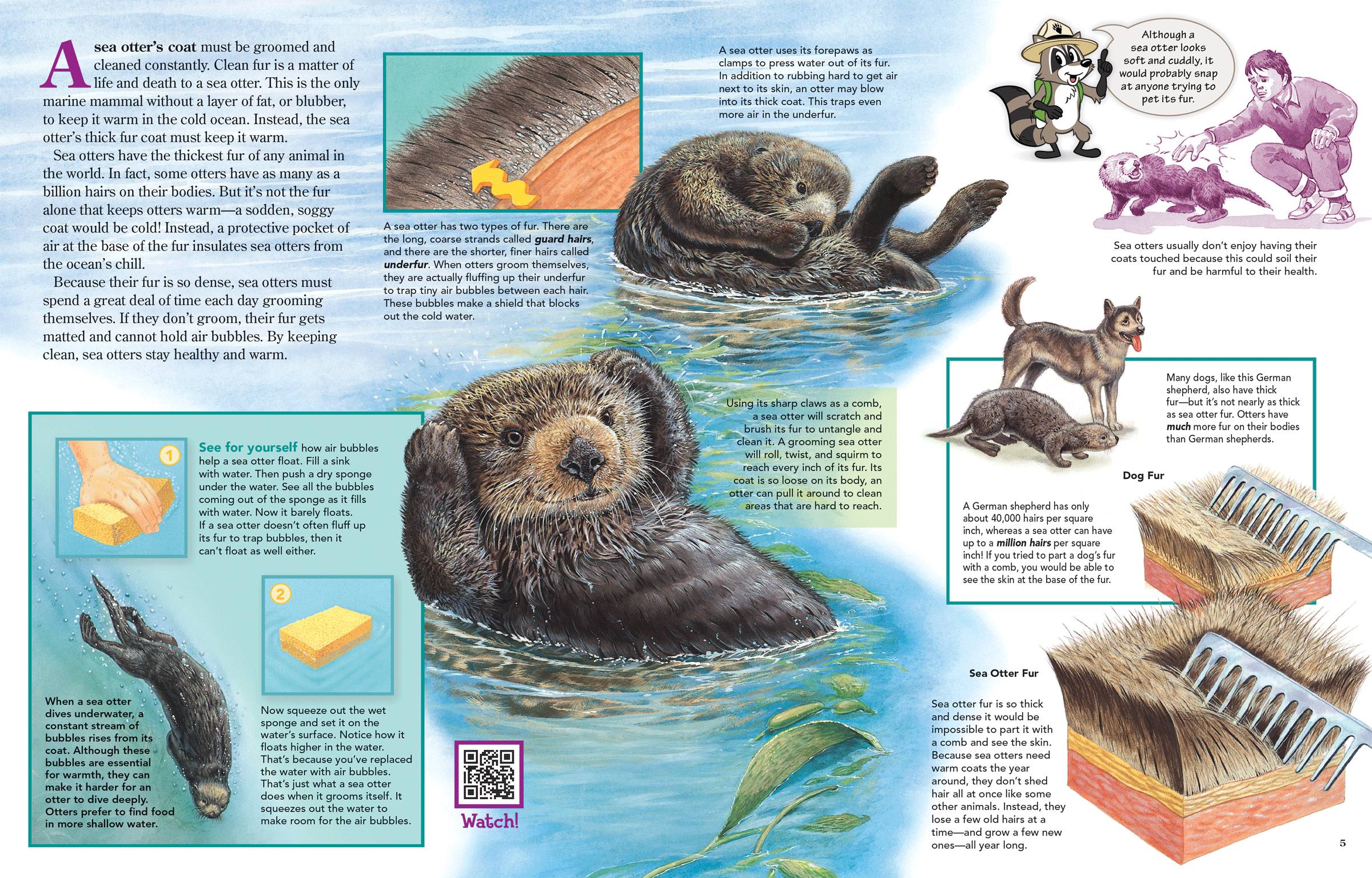
A Sea Otter’s Coat is Very Special
ByA sea otter’s coat must be groomed and cleaned constantly. Clean fur is a matter of life and death to a sea otter. This is the only marine mammal without a layer of fat, or blubber, to keep it warm in the cold ocean. Instead, the sea otter’s thick fur coat must keep it warm.
Sea otters have the thickest fur of any animal in the world. In fact, some otters have as many as a billion hairs on their bodies. But it’s not the fur alone that keeps otters warm—a sodden, soggy coat would be cold! Instead, a protective pocket of air at the base of the fur insulates sea otters from the ocean’s chill.
Because their fur is so dense, sea otters must spend a great deal of time each day grooming themselves. If they don’t groom, their fur gets matted and cannot hold air bubbles. By keeping clean, sea otters stay healthy and warm.
A sea otter has two types of fur. There are the long, coarse strands called guard hairs, and there are the shorter, finer hairs called underfur. When otters groom themselves, they are actually fluffing up their underfur to trap tiny air bubbles between each hair. These bubbles make a shield that blocks out the cold water.
See for yourself how air bubbles help a sea otter float. Fill a sink with water. Then push a dry sponge under the water. See all the bubbles coming out of the sponge as it fills with water. Now it barely floats. If a sea otter doesn’t often fluff up its fur to trap bubbles, then it can’t float as well either.
When a sea otter dives underwater, a constant stream of bubbles rises from its coat. Although these bubbles are essential for warmth, they can make it harder for an otter to dive deeply. Otters prefer to find food in more shallow water.
Now squeeze out the wet sponge and set it on the water’s surface. Notice how it floats higher in the water. That’s because you’ve replaced the water with air bubbles. That’s just what a sea otter does when it grooms itself. It squeezes out the water to make room for the air bubbles.
A sea otter uses its forepaws as clamps to press water out of its fur. In addition to rubbing hard to get air next to its skin, an otter may blow into its thick coat. This traps even more air in the underfur.
Although a sea otter looks soft and cuddly, it would probably snap at anyone trying to pet its fur. Sea otters usually don’t enjoy having their coats touched because this could soil their fur and be harmful to their health.
Using its sharp claws as a comb, a sea otter will scratch and brush its fur to untangle and clean it. A grooming sea otter will roll, twist, and squirm to reach every inch of its fur. Its coat is so loose on its body, an otter can pull it around to clean areas that are hard to reach.
Many dogs, like this German shepherd, also have thick fur—but it’s not nearly as thick as sea otter fur. Otters have much more fur on their bodies than German shepherds.
A German shepherd has only about 40,000 hairs per square inch, whereas a sea otter can have up to a million hairs per square inch! If you tried to part a dog’s fur with a comb, you would be able to see the skin at the base of the fur.
Sea otter fur is so thick and dense it would be impossible to part it with a comb and see the skin. Because sea otters need warm coats the year around, they don’t shed hair all at once like some other animals. Instead, they lose a few old hairs at a time—and grow a few new ones—all year long.

